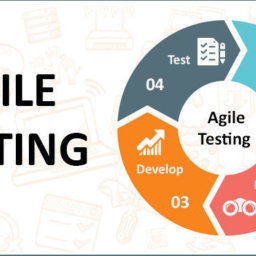Before starting mobile testing, let’s understand what is a mobile application?
The mobile applications are software programs that are designed to run on tablets and smartphones. Testing the mobile application and ensuring that the application is bug-free is known as Mobile Application Testing.
A bug-free mobile application decides it’s success, which can only be achieved by testing. An application can be tested manually and through automation. Let’s focus on the primary approach of manual testing.
These are a few effective tips to achieve a defect-free mobile application. Starting with the application installation testing, which is the first type of testing when it comes to mobile application testing.
- Every software system has its own installation procedure that is performed before installing the application. Testing of these actions is known as Installation Testing.
- Then comes the Functional Testing in which we check the key functionalities of the application, i.e. whether the application is working as per the requirement or not? Functional testing comprises the following types of testing like Unit Testing, Smoke Testing, Sanity Testing, Integration Testing, Interface Testing, System Testing, and Regression Testing.
- Next is Compatibility Testing, which suggests us to test the compatibility of the application with respect to the hardware of the device and operating system. For example: Let’s suppose an application is developed for iOS, then in compatibility testing, we are going to test whether the application is compatible with the latest version or not? Secondly, we check whether the application is compatible with the hardware of the device or not?
- Then we perform Interrupt Testing, it is a process in which we test the application to replicate the unexpected errors/bugs of the application which may come under the circumstances like the incoming calls and messages, poor network coverage, application update reminders and incoming alert from another mobile application etc. while the application is in running mode.
- Now comes the Performance Testing, which is done for testing the performance of the application under different load conditions and checking the response time of the system under that load. There are several tools available in the market for performance testing, you can opt any one of them. For example, many times you must have seen the number of applications getting crashed when hundreds of users are using the same application at the same time, here the performance testing plays a major role, hence at the time of SDLC Performance/ Load testing should be taken care of, to avoid such scenarios.
- Usability Testing is one of the important testing types in which the ease of interaction between the user and the application is verified. Here, it is checked that how easily a user can operate the application. For example, one can easily use the Google search engine as its UI is user-friendly with multiple language options because of which Google is accepted globally.
- Then last is Beta Testing, Beta testing generally starts when the regression testing is completed. It’s the final testing process in which the user acceptance testing is done by the real-time users i.e, the end user/customer.
Although there are so many types of testing, but as per my knowledge the above-mentioned testing types are sufficient to achieve the complete coverage.
There are a lot of things to know. If you want to know more about the Mobile Application Testing, contact us today at +1-484-876-1867 or send us a message.













